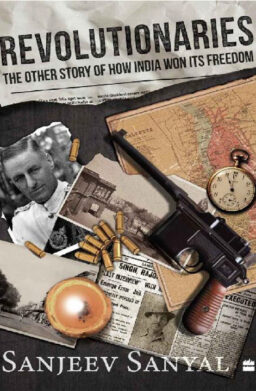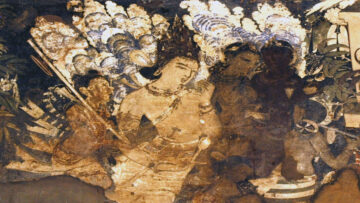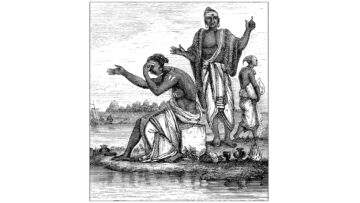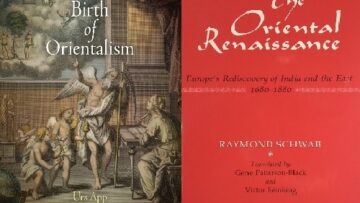A tumultuous story of perseverance, setbacks and patriotism
Introduction
During British colonialism, as well as much of the post independence era, Indians have been constantly bombarded by the media-education-academia complex about how their traditions are backward, immoral, and irrational, whether it be the caste system, the position of women, superstitious beliefs such as astrology etc.
The end result is not surprising: The majority of Indians who call themselves as Hindu developed an inferiority complex over the generations. The liberal/progressive Indians have accepted the negative evaluation of their traditions, and seek to either distance themselves from the Hindu traditions as much as possible, or reform them to fit liberal ideals. Over the past two decades, however, there has been a pushback by a large section of the Hindu population against this derogatory account of their traditions and their past. Oftentimes, this pushback takes the form of ideological wars between the so-called Hindu right and the liberal/Marxist left. Both camps in these ideological wars are products of the inferiority complex mentioned above.
Debates about what is the ‘true’ Indian past occupy a central place in the ideological battleground between the Indian right and left. Besides the ideological battles being waged, many Indians, out of a desire for the truth, have begun to seriously examine and question what they have been told about their past and history. Sanjeev Sanyal’s book Revolutionaries, The Other Story of How India Won Its Freedom, is one such critical examination of recent Indian history. His book is a work of historical revisionism that focuses on the Indian freedom struggle[1].
I was around fifteen or sixteen years of age when I first saw Richard Attenborough’s Oscar award winning film, Gandhi. It was truly a touching and inspiring story about a principled man who galvanized the Indian masses into a triumphant non-violent freedom struggle against the British empire. Whether it was true or not, this was a well-made powerful film. At that time, I accepted this story as what happened. After all, this was essentially the same story that I was taught in my school textbooks as well: I learnt about the formation of the Congress; Nehru and Gandhi, Non-cooperation movement, Satyagraha; how all these events led to India winning its independence. It was a beautiful story, a pinch of salt defeated the British empire. It is important to note that I spent most of my life growing up outside India. It is only after living in and spending considerable time in India during my masters degree, I began to get the sense that Gandhi is more revered outside India than inside it. It was during this time that I began to hear alternative accounts about the Indian freedom struggle. One of those accounts came from the writings of Sri Aurobindo whom I was reading at the time. I vividly remember reading the following passage where he ridiculed Gandhi’s principle of non-violence:
” (A disciple:) If Hitler invades India, Gandhi will declare we are all non-violent.
Aurobindo: Hitler will be delighted at it.
(A disciple): Yes, he will sweep off everybody with machine guns. Gandhi believes he can be converted.
Aurobindo: It is a beautiful idea, but not credible. Does anybody really believe in his non-violence?… Will he face an army with his charkha”
- Aurobindo, May 5, 1940
Even though the textbooks I read in school also mentioned figures like Subhas Chandra Bose and Bhagat Singh, those books give the armed revolutionaries a relatively minor role in the freedom struggle, when compared with Gandhi and the Congress party. Sanjeev Sanyal’s Revolutionaries aims to correct what he sees as a gross injustice done to the armed revolutionaries by the standard historical account, by (inaccurately) minimizing their role in the freedom struggle. Indeed, the armed struggle played an equally, if not more important role in the freedom movement as the non-violent wing, according to Sanyal.
Basic Structure and Summary of the Book
The focus of Sanjeev Sanyal’s book is the armed resistance movement against the British Raj, starting from the late nineteenth/early twentieth century of the British Raj, all the way up to Independence. The book is divided into eight chapters and an epilogue and comes to three hundred and sixty four pages. Often, works of historiography are merely a collection of facts from the past that are boring and tedious to read. Sanjeev Sanyal’s book is refreshingly different in this regard. He has taken historical facts and woven it together into a beautiful story that spans three generations of Indian revolutionaries. Even though this story is set in the twentieth century, much after the events of the 1857 mutiny, the spectre of the mutiny looms large in the minds of the revolutionaries across the generations. Veer Savarkar referred to the mutiny as the first war of independence, and the mutiny served as an emotional and strategic inspiration for revolutionaries all the way from Veer Savarkar to Subhas Chandra Bose, as they thought that the long-term strategy to defeat the British was to turn the Indians serving in their military institutions against them.
There are two other major themes that comprise this book. The first is the organizational/strategic aspect of revolutionary activity, and the second are the painful and emotional setbacks and failures faced by these revolutionaries, and their perseverance despite these failures. In this regard, this is truly an inspirational story for all of us in all walks of life. Despite the most gut-wrenching suffering and crushing defeats, these men (and a few women) kept the flame of the revolutionary fire burning and the dream of a free India alive. Regarding the first theme, one of the aspects of Sanjeev Sanyal’s book that makes it stand out amongst numerous other books about the Indian armed struggle, is its comprehensiveness and breadth. Most other works about the armed struggle are about individual revolutionaries and their acts of heroism, rather than presenting the Indian revolutionaries as having comprised a movement with wide networks not only inside India, but also in Britain, France, Thailand, and Germany.
The first three chapters of the book covers the ideological beginnings and development of the armed revolution movement. Sanjeev Sanyal observes that the revolutionary movement emerged at a time of great ideological ferment in India, the late nineteenth century. Books, newspapers, and magazines were becoming widespread, and major universities were established across India. The Indian populace was exposed to Western ideologies such as nationalism and socialism for the first time through these mediums. I found it interesting that most of the revolutionaries came from middle class and upper middle class families. After all, it was they who could afford to send their children to the elite British universities. Thus, ironically, the same elite universities that were meant to produce and produced Macaulay’s children, also played a formative role in shaping the anti-empire revolutionaries. Most of the revolutionaries took to one or another form of ideology. Among these ideologies however, Sanyal notes that the native ideology of Hindu religious reform and revivalist movements were the most popular. The majority of the revolutionary leaders were deeply religious, and it influenced their political views as well. At the same time, it should be noted that Hindu revivalism itself is a product of Western Orientalism, but that is a story for another day. Despite their ideologies however, the revolutionaries were basically pragmatists and would work with groups with varied ideologies as long as it served the purpose of overthrowing the British empire.
The focus of the first three chapters is on the figures of Sri Aurobindo and Veer Savarkar, whom Sanyal regards as the ideological progenitors of the revolutionary movement. As mentioned, it is ironic that Aurobindo who grew up in England since childhood, studied in a Christian school, and up until his college years, had almost no contact with his native language or culture, would end up as a Hindu revolutionary guru. Veer Savarkar’s formative years as an armed revolutionary also happened in England, as a young university student. I think this is a salient pattern that I will come to later. It was Aurobindo and Savarkar who were among the first to initiate organized and well networked revolutionary movements. Aurobindo took the organizations known as akhadas, akin to traditional mutts or orders that offered both military and spiritual training to disciples, and turned them into training institutes for prospective revolutionaries and formed these akhadas into a network known as the Anushilan Samiti, which would play an important role in the decades to come all the way up to independence. Similarly, Savarkar created a network of political activist organizations in Maharashtra (and eventually all over India) known as Abhinav Bharat, which would later become a revolutionary network. When Savarkar came to London to study law, he established a branch of the Abhinav Bharat at a hostel called India House. India House gradually gained the reputation of being a hub for Indian revolutionaries and revolutionary activity. It included some important names who leave their mark on India’s struggle for Independence including Lala Hardayal and V.V.S. Aiyar. It was during this time that Savarkar formulates his strategy and vision for India winning its independence. In a moving speech, he referred to the events of 1857 as not merely a mutiny but as the first war of independence, and a rehearsal for a future war of independence. In Savarkar’s writings, he makes it clear that the long term strategy for the revolutionary movement was to incite dissension among Indians within the military forces of the empire. The third chapter of the book ends in tragedy. Following two high profile assassinations of British officials by members of the Abhinav Bharat, Savarkar and his comrade in arms Madanlal Dhingra were arrested. Dhingra’s own family disowned him, and he was sentenced to death by hanging. Savarkar was the only person who met Dhingra in prison before his own arrest. Savarkar himself is sentenced to fifty years in the cellular jail in Andaman. Before he is shipped off to Andaman, he has an emotional meeting with his wife, where he bids her farewell. Sanjeev Sanyal describes this scene vividly and one can feel the heartache and pain as one reads these pages.
Despite the sad ending to the third chapter, Sanyal states that the first generation of revolutionary leaders had achieved quite a lot. They had established revolutionary networks, provided intellectual underpinnings, and extracted concessions from the British, such as political representation for Indians in the form of legislative councils. The next five chapters narrate the activities, trials and tribulations of the second generation of Indian revolutionaries, such as Sachindra Nath Sanyal and Subhas Chandra Bose, who are described as having more success in threatening the colonial edifice. Rashbehari Bose along with Sachindra Nath Sanyal were the first to organize a mass rebellion involving the military, modelled on the revolt of 1857. They saw the first world war as an opportunity to strike while the iron is hot. This would later become to be known as the Ghadar mutiny of 1915, involving the Sikh revolutionary political party in North America, known as the Ghadar party. Although I was aware of the Sikh involvement in the Indian freedom struggle, it was through this book that I learned the full extent of their involvement and the important role they played in the revolutionary movement. Sanjeev Sanyal gives a detailed account of the genesis and growth of the Ghadar movement in North America and the arrival of the Ghadarites in India. Unfortunately, the February revolt fell apart due to a mole among the revolutionaries informing the British authorities ahead of time.
Despite this failure, it was evident that the revolutionary movement had come a long way since its beginnings and showed their capability to organize a mass revolt.
The climax of the book comes in the form of Subhas Chandra Bose’s INA (Indian National Army) aligning themselves with the Japanese army and battling the British army in Burma and Manipur, and eventually being defeated after a tough, heated battle. Even though the INA was defeated, Sanyal claims that the trial of the INA leaders led to a chain of events that resulted in large numbers of Indian soldiers in the navy, the air force, and the army to turn on the British authorities. Members of the airforce and army refused to follow orders, while some members of the Indian Royal Navy temporarily took over the naval base in Bombay.
Even though this insurrection was eventually put down, according to Sanyal, it was this post World War II Indian military insubordination that played an equally, if not even more instrumental role than Gandhian non-cooperation, in the British eventually granting independence to India. There is a delicious irony to the whole situation if indeed the non-cooperation of the military, created by the revolutionary movement, played a more instrumental role in winning Indian independence than Gandhian non-cooperation.
Nationalists vs Loyalists
One of the important threads in the story of the Indian revolutionary movement, is the acrimonious and often bitter relationship that many of the armed revolutionaries had with the Congress party. The Congress party was seen by revolutionaries such as Aurobindo as a group of anglicized servile Indian elites, who had no connection with the wider population, and used as a form of controlled opposition to keep the native populace in check. In his book, Sanyal uses certain incidents to demonstrate the contempt that many revolutionaries had towards the Congress party. For example, Aurobindo wrote a series called ‘New Lamps for Old’, in which he derided the tiny elite that ran the Congress for celebrating minor concessions, and referred to the Congress party as the loyalists of the empire. Revolutionaries like Sachindra Nath Sanyal were skeptical of the effectiveness of Gandhi’s non-cooperation movement, and were highly critical of Gandhi when he withdrew the movement, because of some isolated incidents of violence. They pointed to how Gandhi had supported the war efforts of the British during the first World War, which was far from non-violent. After the bombing of the Central Legislative Assembly building by the revolutionary Bhagat Singh and his comrades (a non-lethal bombing without casualties used to make a political statement), Gandhi wrote a scathing column in the newspaper Young India titled the Cult of the Bomb, in which he criticized the armed revolution movement on both ethical and strategic grounds. In response, Bhagawati Charan published a pamphlet titled ”The Philosophy of the Bomb” in which he retorted: “What has the Congress been doing? It has changed its creed from Swaraj to Complete Independence. As a logical sequence to his one would expect it to declare a war on the British government. Instead, we find it has declared a war against the revolutionaries…It is mainly the mania for non-violence and Gandhi’s compromise mentality that brought about the disruption of the forces that had come together at the call of Mass Action”. This above quote is representative of how many of the revolutionaries felt about Gandhi and the Congress party. This wasn’t merely a difference of opinion about methodology, but a deeper rift that revolved around the questions of who are we as Indians? and what kind of nation do we want to be?
Strategic Organization and Defeats
As mentioned, two other major themes tackled in the book are the organizational strategy of the revolutionaries and the innumerable setbacks and defeats faced by them. Even though Revolutionaries ends on a happy note, it is fair to say that this book is a tragic story of defeats, heartbreak, betrayal and plain incompetence. Despite the mature and sharp revolutionaries like Subhas Chandra Bose and Sachindra Nath Sanyal organizing revolutionary networks and engaging in long-term strategizing, they seem to be the exception rather than the rule. The majority of the individuals involved in the armed freedom struggle were impetuous young men who engaged in little planning and coordination, and didn’t possess long-term vision. This is evidenced by the many incidents of blunders and failed assassinations littered throughout the book. Some of the blunders are almost comical. For example, in order to avenge the killing of the political activist Lala Lajpat Rai by the superintendent of police James Scott, Bhagat Singh and his comrades plan and attempt to assassinate James Scott, but failed to plan for the contingency that he might be absent. On the day of the assassination James Scott was on holiday leave, and only his assistant superintendent J.P. Saunders was on duty in the police station. Bhagat Singh realized this and tried to call the assassination off, but one of the revolutionaries mistakenly started firing on assistant superintendent Saunders.
That despite these failures, generations of Indian revolutionaries kept persevering and keeping the dream of an independent India alive is a testament to their strength and resolve. They have sacrificed much, their families, their homes, and their reputation, for the cause of freedom.
Lingering Thoughts and Questions
Some lingering thoughts and questions remain after reading Revolutionaries.
Did the armed revolutionary movement really help win Independence? How important a role did they play? These are interesting questions, but all anyone can say is: We don’t know. There is no scientific law or theory of history that helps us predict how an event or a series of events are interconnected and lead to other events.
Another related question: Why didn’t the armed revolutionary struggle become a mass movement? Although some people were inspired, it has to be said that the different ideologies espoused by these revolutionaries never galvanized a significant proportion of the Indian public into action. This is in stark contrast to the French and Russian revolutions. Is this because political ideologies are a Western import and alien to Indian culture? For that matter there doesn’t seem to have been political revolutions in pre-colonial idea? Why? Were Indians a weak and servile people that didn’t resist oppression? Or was the political structure such that it negated the necessity of a revolution?
Also, ethical questions abound about the use of violence. Indian texts like the Itihasas and Bhagavad Gita certainly make a good case for the use of violence in certain situations. As Bhishma said to Yudhishtra in the Mahabharata, it is the kshatriya’s dharma to use violence to maintain peace and order in society and protect its members. But at the same time, it has to be asked what is the difference between a freedom fighting revolutionary and a terrorist? Ronald Reagan is famously quoted as saying ”one man’s freedom fighter is another man’s terrorist”. But this attitude merely justifies immoral and criminal acts like murder and transforms them into heroism. I don’t have any answers to this question. I only wish to propose this general heuristic: One should avoid violence towards and killing of civilians to achieve political ends. Acts of violence should be the last resort, and should be limited to military and political figures.
This book also devotes considerable space to the depths of violence that British rule inflicted on Indians. The cellular jail in Andaman, the Jallianwala Bagh massacre, and the Bengal famine of 1943 are discussed in detail. The violence of the Bengal famine is especially horrific. Sanjeev Sanyal makes it clear with evidence, that the famine was at least partially engineered by the British to brutally suppress any resistance by their colonial subjects, and at the same time, to pre-emptively prevent the Japanese from accessing food and other supplies in case they invaded Bengal. Recently, there was controversy over a Subhas Chandra Bose statue being erected at India Gate, because Bose sought to align himself with the Nazis in order to overthrow the British. But for Indians, there was no difference experienced between the Nazis and the British. As Sanjeev Sanyal rightly points out, the views of Winston Churchill’s key scientific adviser Professor Lindemann is difficult to distinguish from those of the Nazis. Both believed in racial science, dehumanized the non-white peoples, and believed in human eugenics. As Sanyal states, ”seen from the Indian perspective, therefore, the Second World War was not one between good and evil, as is often portrayed, but one between two sets of evil empires that both had blood on their hands”.
Another phenomenon this book shines a light on is the servility of many Indians, not only the political class, but also Indian civil servants, and members of the police and military. They perpetuated the violence of their colonial masters without qualms. How was this possible? One question that needs to be further explored is whether the servility of these people a consequence of British colonialism, or does it go back much further and was entrenched by centuries of Islamic rule?
Overall Evaluation
Overall, Sanjeev Sanyal has produced a book which tells a very interesting and moving historical account of the Indian revolutionary freedom struggle. Even though some parts of the book are a drag to get through (Chapters 6 and 7), Sanyal sustains the interest of the viewer by creating a cohesive story across eight chapters. This cohesiveness is achieved by focusing on key themes such as revolutionary networks, ideologies, failures and setbacks, gains, and of course, the long term strategy of creating insurrection within the British empire’s military.
I would recommend this book as a very good piece of historical revisionism that serves as a counterbalance to the standard historical account in which Mahatma Gandhi and the Congress party occupy the central role in the independence struggle.
[1] Historical revisionism is not a negative or derogatory term. It is used to refer to any work that challenges the commonly accepted account of historical events.
Disclaimer: The opinions expressed in this article belong to the author. Indic Today is neither responsible nor liable for the accuracy, completeness, suitability, or validity of any information in the article.










